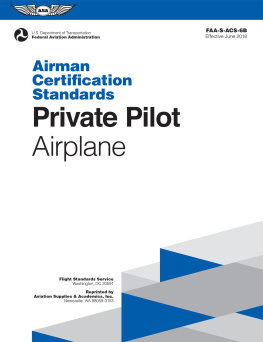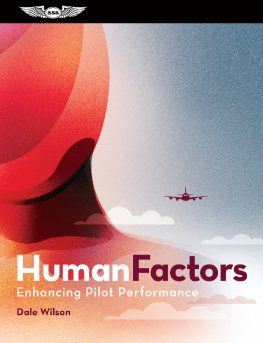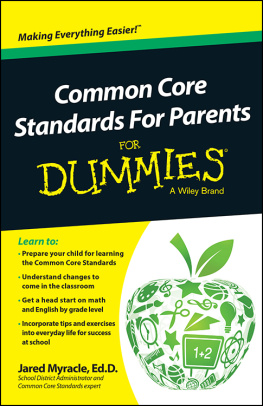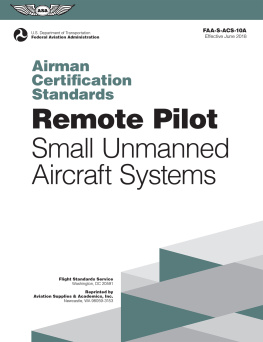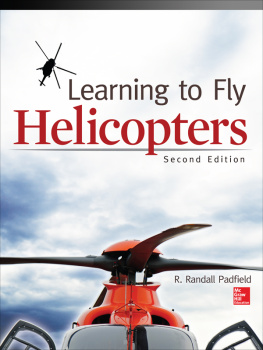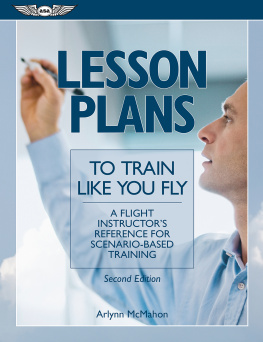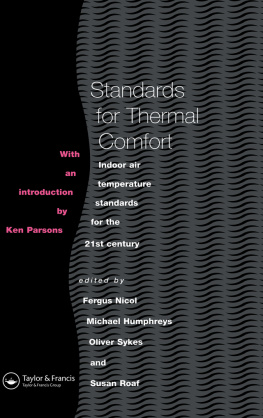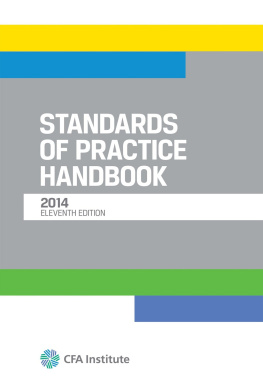Flight Standards Service - Airman Certification Standards Private Pilot Airplane
Here you can read online Flight Standards Service - Airman Certification Standards Private Pilot Airplane full text of the book (entire story) in english for free. Download pdf and epub, get meaning, cover and reviews about this ebook. year: 0, publisher: US Department of Transpertation, genre: Science. Description of the work, (preface) as well as reviews are available. Best literature library LitArk.com created for fans of good reading and offers a wide selection of genres:
Romance novel
Science fiction
Adventure
Detective
Science
History
Home and family
Prose
Art
Politics
Computer
Non-fiction
Religion
Business
Children
Humor
Choose a favorite category and find really read worthwhile books. Enjoy immersion in the world of imagination, feel the emotions of the characters or learn something new for yourself, make an fascinating discovery.
- Book:Airman Certification Standards Private Pilot Airplane
- Author:
- Publisher:US Department of Transpertation
- Genre:
- Year:0
- Rating:4 / 5
- Favourites:Add to favourites
- Your mark:
- 80
- 1
- 2
- 3
- 4
- 5
Airman Certification Standards Private Pilot Airplane: summary, description and annotation
We offer to read an annotation, description, summary or preface (depends on what the author of the book "Airman Certification Standards Private Pilot Airplane" wrote himself). If you haven't found the necessary information about the book — write in the comments, we will try to find it.
Airman Certification Standards Private Pilot Airplane — read online for free the complete book (whole text) full work
Below is the text of the book, divided by pages. System saving the place of the last page read, allows you to conveniently read the book "Airman Certification Standards Private Pilot Airplane" online for free, without having to search again every time where you left off. Put a bookmark, and you can go to the page where you finished reading at any time.
Font size:
Interval:
Bookmark:
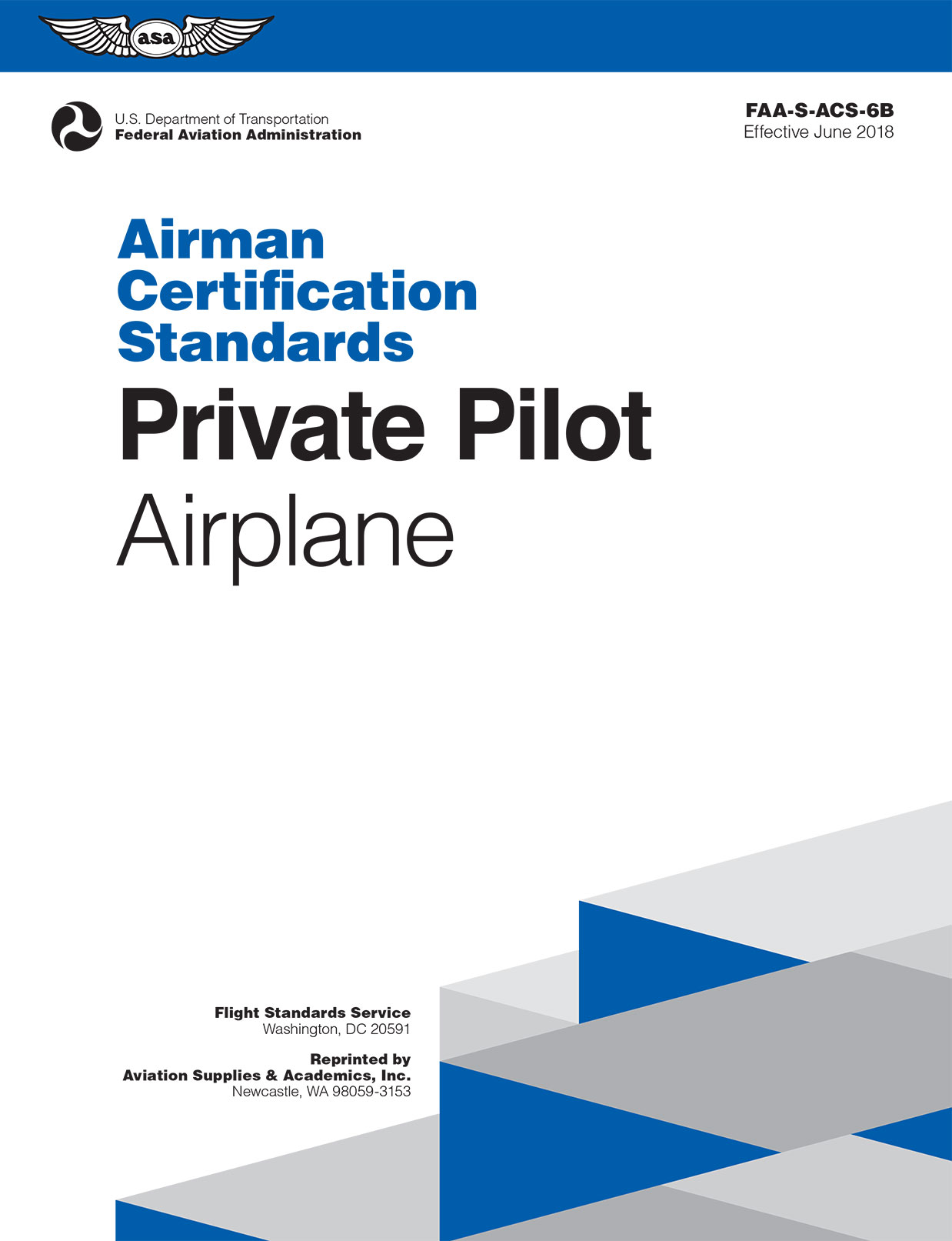
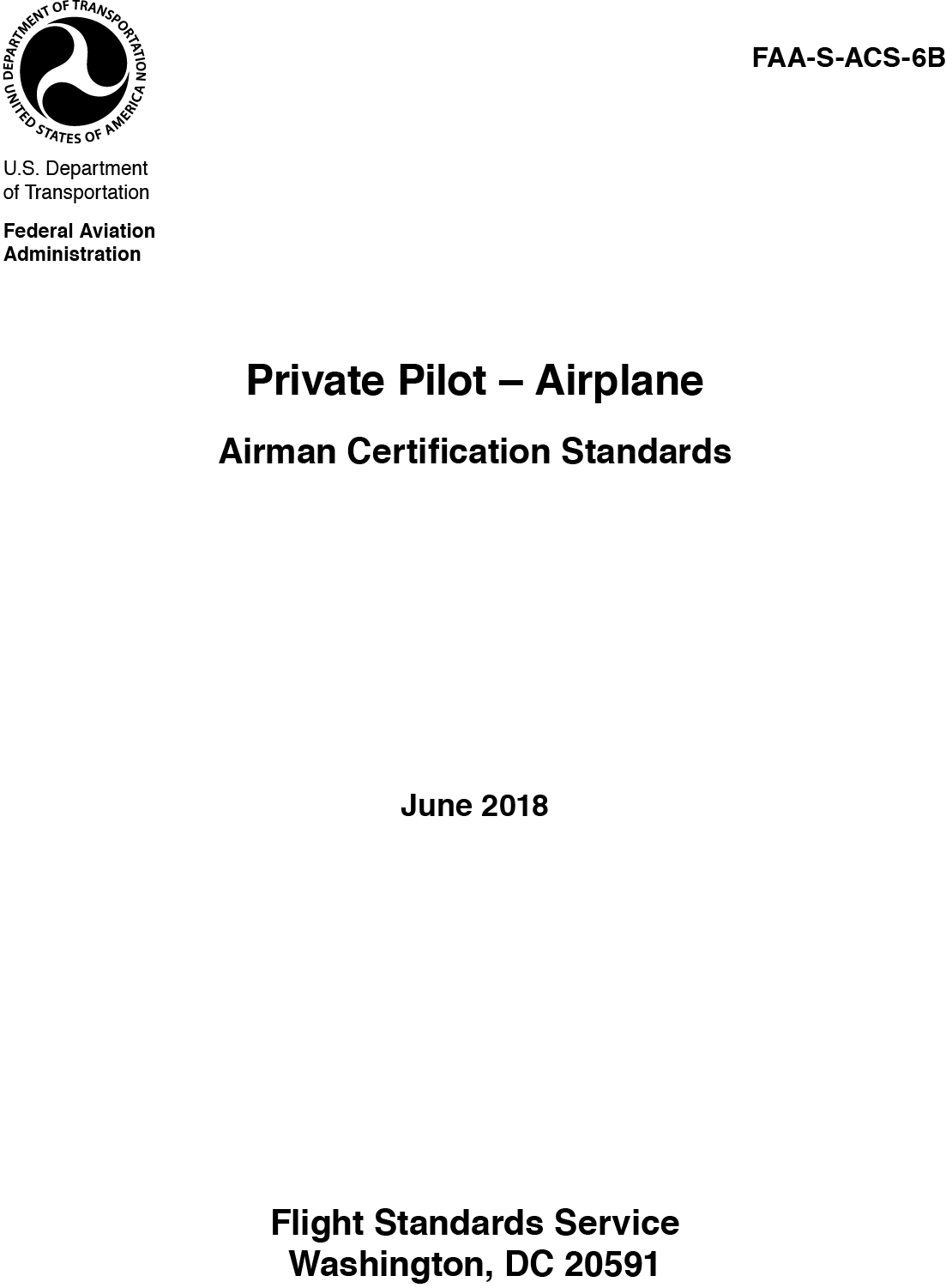
Acknowledgments
The U.S. Department of Transportation, Federal Aviation Administration (FAA), Office of Safety Standards, Regulatory Support Division, Airman Testing Branch, P.O. Box 25082, Oklahoma City, OK 73125 developed this Airman Certification Standards (ACS) document with the assistance of the aviation community. The FAA gratefully acknowledges the valuable support from the many individuals and organizations who contributed their time and expertise to assist in this endeavor.
Availability
This ACS is available for download from .
Material in FAA-S-ACS-6B will be effective June 11, 2018. All previous editions of the Private Pilot Airplane Airman Certification Standards will be obsolete as of this date for airplane applicants.
Foreword
The Federal Aviation Administration (FAA) has published the Private Pilot Airplane Airman Certification Standards (ACS) document to communicate the aeronautical knowledge, risk management, and flight proficiency standards for the private pilot certification in the airplane category, single-engine land and sea; and multiengine land and sea classes. This ACS incorporates and supersedes FAA-S-ACS-6A, Private Pilot Airplane Airman Certification Standards, Change 1.
The FAA views the ACS as the foundation of its transition to a more integrated and systematic approach to airman certification. The ACS is part of the safety management system (SMS) framework that the FAA uses to mitigate risks associated with airman certification training and testing. Specifically, the ACS, associated guidance, and test question components of the airman certification system are constructed around the four functional components of an SMS:
Safety Policy that defines and describes aeronautical knowledge, flight proficiency, and risk management as integrated components of the airman certification system;
Safety Risk Management processes through which both internal and external stakeholders identify changes in regulations, safety recommendations, or other factors. These changes are then evaluated to determine whether they require modification of airman testing and training materials;
Safety Assurance processes to ensure the prompt and appropriate incorporation of changes arising from new regulations and safety recommendations; and
Safety Promotion in the form of ongoing engagement with both external stakeholders (e.g., the aviation training industry) and FAA policy divisions.
The FAA has developed this ACS and its associated guidance in collaboration with a diverse group of aviation training experts. The goal is to drive a systematic approach to all components of the airman certification system, including knowledge test question development and conduct of the practical test. The FAA acknowledges and appreciates the many hours that these aviation experts have contributed toward this goal. This level of collaboration, a hallmark of a robust safety culture, strengthens and enhances aviation safety at every level of the airman certification system.

John S. Duncan
Executive Director, Flight Standards Service
Revision History
Document# | Description | Revision Date |
FAA-S-8081-14B | Private Pilot Practical Test Standards for Airplane, (Changes 16) | November 2011 |
FAA-S-ACS-6 | Private Pilot Airplane Airman Certification Standards | June 1, 2016 |
FAA-S-ACS-6 | Private Pilot Airplane Airman Certification Standards (Change 1) | June 15, 2016 |
FAA-S-ACS-6A | Private Pilot Airplane Airman Certification Standards | June 12, 2017 |
FAA-S-ACS-6B | Private Pilot Airplane Airman Certification Standards | June 11, 2018 |
Major Enhancements to Version FAA-S-ACS-6B
Revised Introduction and appendices to account for FAA reorganization.
Replaced numerous prescriptive references to airplane configuration with more general references.
Revised numerous Tasks in all Areas of Operation to include more consistent element descriptions.
Added language to account for Part 68 BasicMed.
Included SFRA and SATR, if applicable, in Area of Operation I, Task E.
Distinguished different types of hypoxia in Area of Operation I, Task H.
Broadened scope of engine starting conditions knowledge element in Area of Operation II, Task C.
Revised Area of Operation III, Task A to include runway lighting systems.
Revised Area of Operation IV to require touch down a proper pitch attitude.
Restored distance tolerance in Area of Operation IV, Task B.
Added airspeed tolerance to Area of Operation IX, Task A.
Revised Area of Operation X, Tasks C and D to match the Instrument Rating Airman Certification Standards.
Correlated knowledge elements of multiengine airplane engine inoperative flight to zero sideslip.
Revised language regarding reduction of drag with one engine inoperative in terms of the manufacturers recommendation or appropriate use of flight controls.
Added CFIT to low altitude maneuvering risk elements.
Added a reference to Task Objectives and enhanced Appendix 7: Aircraft, Equipment, and Operational Requirements & Limitations, regarding flight solely by reference to instruments.
Updated the following Appendices:
Appendix 1: The Knowledge Test Eligibility, Prerequisites, and Testing Centers
Appendix 5: Practical Test Roles, Responsibilities, and Outcomes
Appendix 6: Safety of Flight
Appendix 7: Aircraft, Equipment, and Operational Requirements & Limitations
Appendix 9: References
Appendix 10: Abbreviations and Acronyms
Introduction
Airman Certification Standards Concept
The goal of the airman certification process is to ensure the applicant possesses the knowledge, ability to manage risks, and skill consistent with the privileges of the certificate or rating being exercised, in order to act as Pilot-in-command (PIC).
In fulfilling its responsibilities for the airman certification process, the Federal Aviation Administration (FAA) Flight Standards Service (AFS) plans, develops, and maintains materials related to airman certification training and testing. These materials have included several components. The FAA knowledge test measures mastery of the aeronautical knowledge areas listed in Title 14 of the Code of Federal Regulations (14 CFR) part 61. Other materials, such as handbooks in the FAA-H-8083 series, provide guidance to applicants on aeronautical knowledge, risk management, and flight proficiency.
Safe operations in todays National Airspace System (NAS) require integration of aeronautical knowledge, risk management, and flight proficiency standards. To accomplish these goals, the FAA drew upon the expertise of organizations and individuals across the aviation and training community to develop the Airman Certification Standards (ACS). The ACS integrates the elements of knowledge, risk management, and skill listed in 14 CFR part 61 for each airman certificate or rating. It thus forms a more comprehensive standard for what an applicant must know, consider, and do for the safe conduct and successful completion of each Task to be tested on both the qualifying FAA knowledge test and the oral and flight portions of the practical test.
Font size:
Interval:
Bookmark:
Similar books «Airman Certification Standards Private Pilot Airplane»
Look at similar books to Airman Certification Standards Private Pilot Airplane. We have selected literature similar in name and meaning in the hope of providing readers with more options to find new, interesting, not yet read works.
Discussion, reviews of the book Airman Certification Standards Private Pilot Airplane and just readers' own opinions. Leave your comments, write what you think about the work, its meaning or the main characters. Specify what exactly you liked and what you didn't like, and why you think so.

